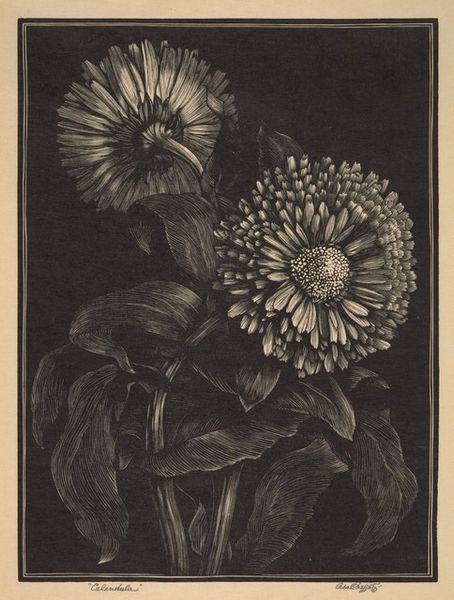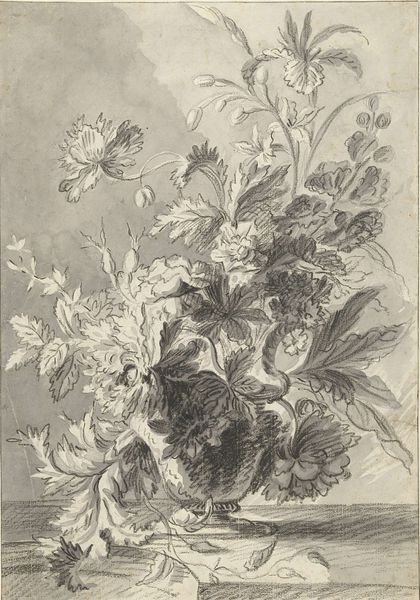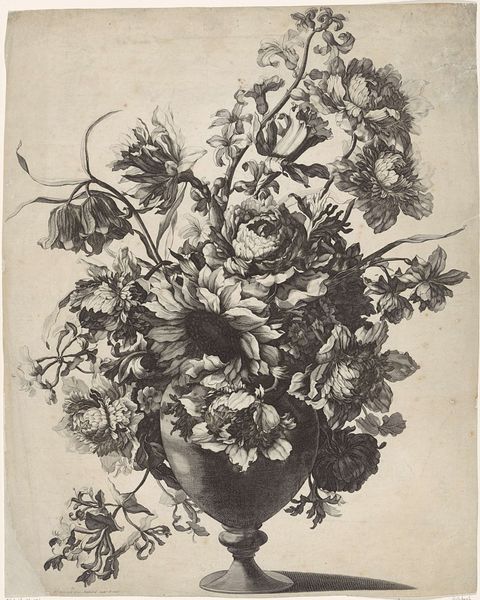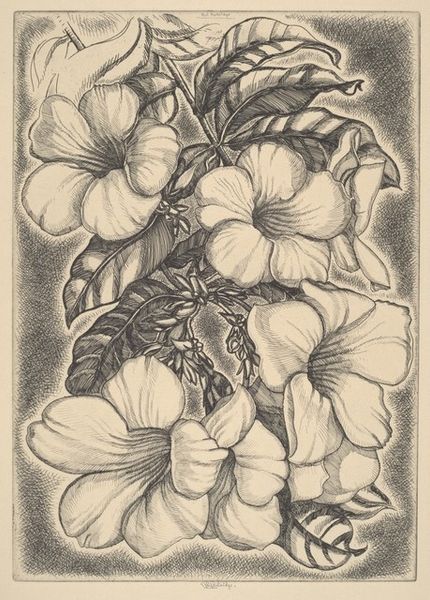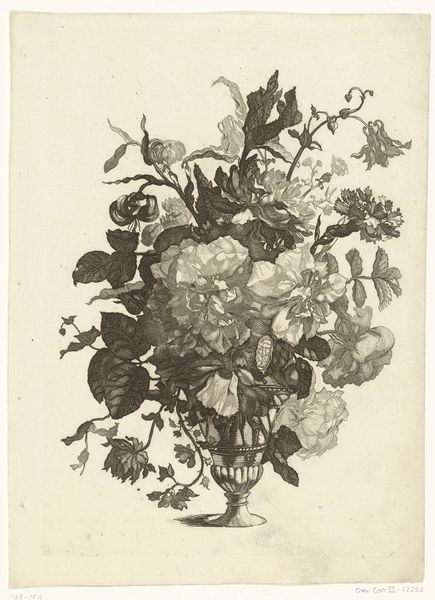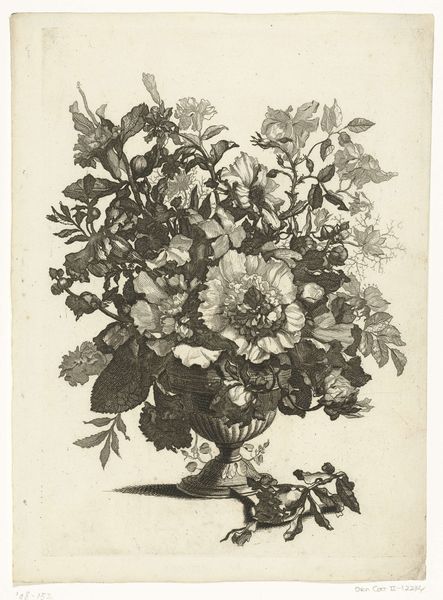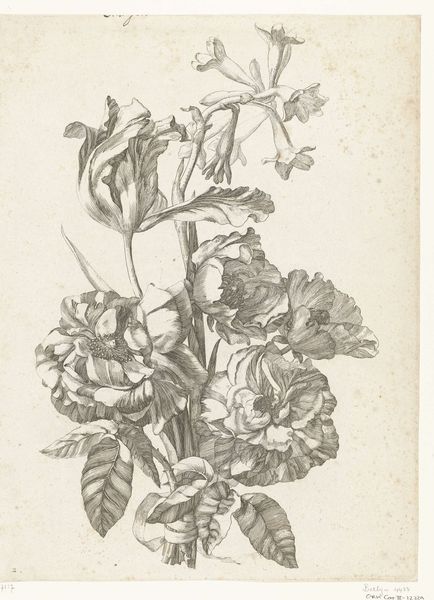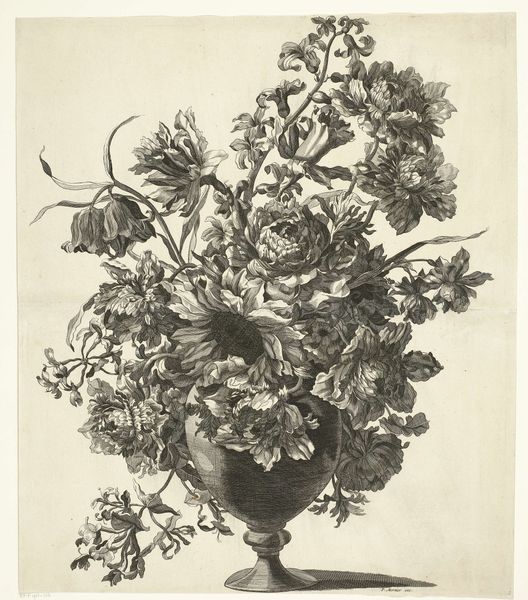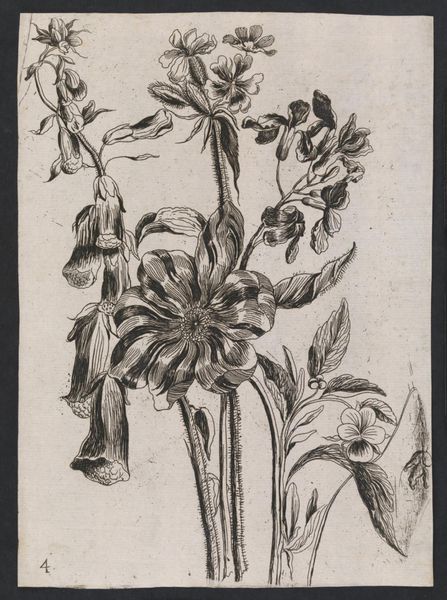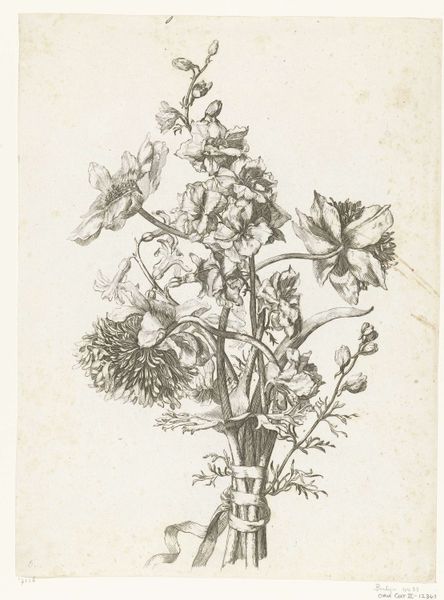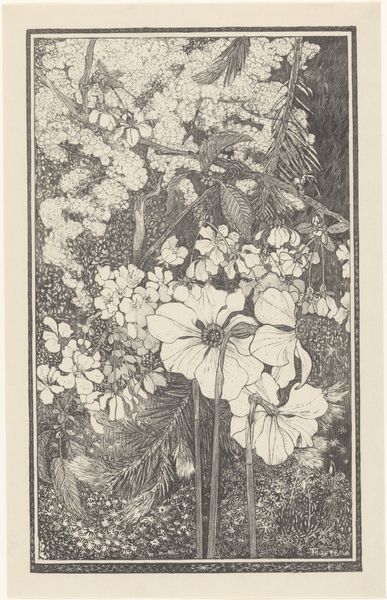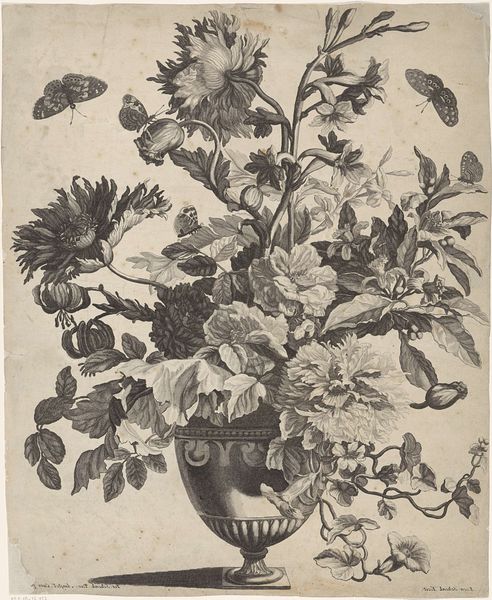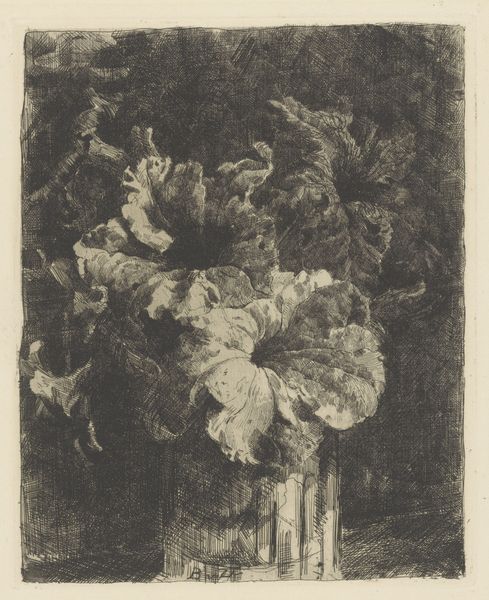
print, dry-media, graphite
# print
#
charcoal drawing
#
dry-media
#
pencil drawing
#
coloured pencil
#
graphite
#
realism
Dimensions: image: 353 x 251 mm sheet: 405 x 300 mm
Copyright: National Gallery of Art: CC0 1.0
Editor: This Lily Schierenberg Converse print, dating to the 1940s and titled “Hollihocks”, presents such a concentrated mass of floral forms. There’s a real textural complexity. Curator: Absolutely. The materiality suggests an engagement with traditional drawing media—graphite, perhaps charcoal and colored pencil too—reflecting accessible methods readily available to artists during that era. Notice the density achieved through layering and mark-making, suggesting a deliberate approach to production. Editor: I see that. What stands out to me is how these blooms, rendered so meticulously, might signify notions of domesticity and perhaps a sense of comfort amidst the uncertainties of the war years. Botanical art had a long history, but it feels significant for women artists especially. Curator: Good point. I'm drawn to think of this as not just aesthetic engagement, but also the social context where this artist might've situated her creative practice and the reception and public role such artwork took. Were there patterns in gender-based engagement and opportunities? What did those opportunities for consumption, the gallery setting perhaps, communicate about gender in that society? Editor: Exactly, the placement is so key. Thinking about the printmaking process itself – creating multiple originals, making art accessible to a wider audience at a potentially lower cost. Did that challenge conventional hierarchies of fine art? Did it give access and agency to the artist? Curator: Precisely! Printmaking techniques themselves could be understood as tools. How were they leveraged during times of restricted resources? Were collaborative models used more? Exploring these elements shows how the political is inherently embedded. Editor: Thinking about this piece in terms of its immediate impact is one lens; and what it tells us more broadly about labor, artistic skill, socio-economic conditions opens a new one entirely. Curator: Definitely, a lens worth exploring further as we engage with art from this period. It deepens our experience when we explore the full artistic process and socio-political framework surrounding works like these.
Comments
No comments
Be the first to comment and join the conversation on the ultimate creative platform.
